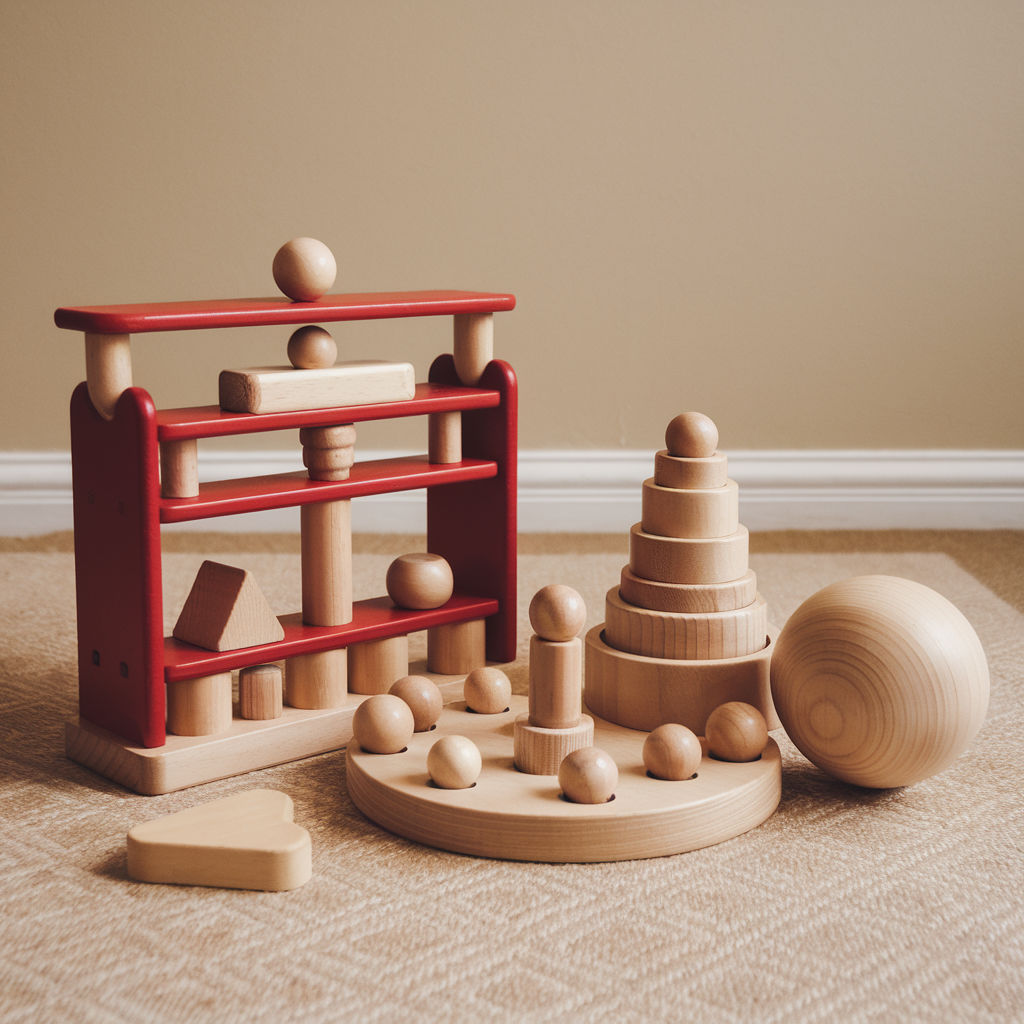Wooden toys are a popular choice for parents seeking safe, durable, and eco-friendly options for their children. However, like any natural material, wood is susceptible to moisture and mold, especially if not properly cared for. To ensure that your child’s wooden toys last for years and remain safe, it’s essential to take some preventive measures. Below are practical tips on how to protect wooden toys from mold and moisture.

1. Proper Storage
The way you store wooden toys can make a big difference in protecting them from moisture. The storage area should be dry, well-ventilated, and away from heat or moisture sources such as bathrooms or kitchens.
Storage tips:
- Use ventilated storage boxes or open shelves that allow air to circulate around the toys.
- Avoid storing toys in damp places like attics or basements.
- If possible, store the toys in a humidity-controlled environment, especially if your home is prone to high humidity levels.
A dry environment is key to preventing the wood from absorbing moisture, which can cause swelling or mold growth.
2. Regular Cleaning with Appropriate Products
Keeping wooden toys clean is one of the most effective ways to prevent mold buildup. However, it’s important to avoid harsh or water-based cleaning products, which can damage the wood.
Cleaning suggestions:
- Wipe the toys regularly with a dry or slightly damp cloth using a mild mixture of white vinegar and water (in equal parts).
- Dry the toys immediately after cleaning to avoid moisture absorption.
- Never soak wooden toys in water or use excessive amounts of liquid to clean them.
Regular cleaning not only helps remove dirt and dust but also keeps the wood’s surface protected from moisture buildup.
3. Apply Protective Oil or Wax
One effective way to protect wooden toys from moisture is to apply a layer of protective oil or wax. These products help seal the wood, creating a natural barrier against water and moisture penetration.
What to use:
- Linseed oil or coconut oil are natural and safe options for children’s toys.
- Natural waxes, like beeswax, are also excellent for creating a protective layer.
- Apply the product with a soft cloth, gently rubbing it onto the wood’s surface, and then wipe off any excess. Let it dry completely before allowing children to play with the toy.
This extra layer of protection helps extend the lifespan of wooden toys by keeping them in good condition and shielding them from the effects of moisture.
4. Ventilation and Sun Exposure
Mold thrives in damp, unventilated environments. That’s why allowing wooden toys to receive proper ventilation and occasional exposure to sunlight can be an effective way to prevent mold growth.
How to do it:
- Place wooden toys in a well-ventilated area after use, ensuring they aren’t stored while still damp.
- Occasionally, let the toys sit in the sun for a few hours. Sunlight helps dry out any accumulated moisture and can act as a natural disinfectant.
However, avoid exposing the toys to direct sunlight for extended periods, as this could fade the color or damage the wood’s surface.
5. Regular Inspection
Even with preventive care, it’s important to inspect wooden toys regularly for early signs of mold or moisture damage.
What to look for:
- Check for dark spots, moldy odors, or areas that feel wetter than usual.
- If you find any mold, immediately clean the affected area with a vinegar and water solution, and if necessary, lightly sand the surface to remove any embedded mold.
By regularly inspecting toys, you can catch potential problems before they worsen, preserving the toys’ quality and extending their life.
Conclusion
Protecting wooden toys from mold and moisture requires simple but effective care, such as proper storage, regular cleaning, and applying oils or waxes. These measures ensure that toys remain safe and in good condition for years, providing fun and learning opportunities for children without compromising their health or the toys’ durability. With a bit of attention and preventive care, you can keep your child’s wooden toys free of mold and ready for play.
